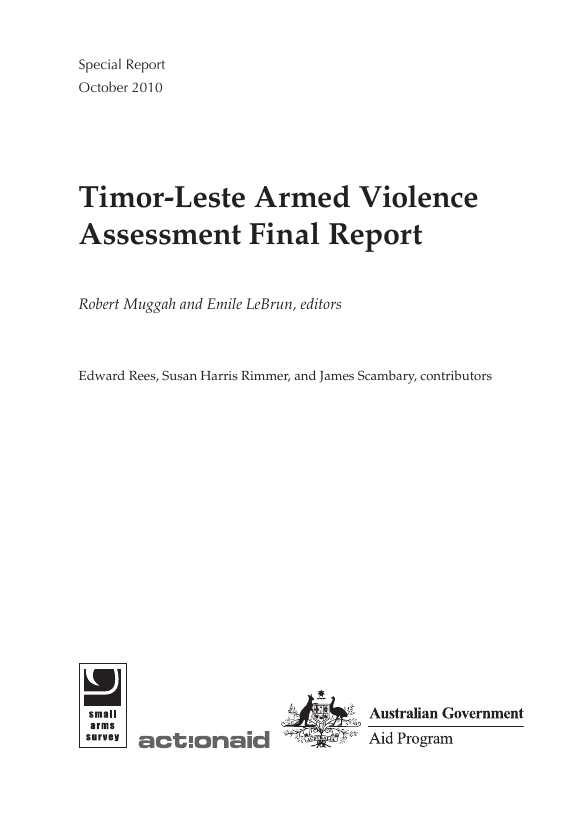
Timor-Leste Armed Violence Assessment Final Report (Special Report 12)
A little more than a decade after independence and the violence and displacement that accompanied it, Timor-Leste remains a country in transition. While it has stabilized in the post-independence period, the after-effects of the 2006 crisis continue to play an important role in the political debate and security atmosphere in the country. Communal violence remains at times a feature of life in rural areas, and small arms—left over from the pre-independence period and more recently leaked from defence and police forces—sometimes fuel both gang-related and community violence.
This report brings together research and analysis produced for the Timor-Leste Armed Violence Assessment (TLAVA) over the period 2008–10. The TLAVA was a two-year field research-based project to explore pressing security issues in Timor-Leste, with a specific focus on the dynamics of armed violence. Co-sponsored and administered jointly by the Small Arms Survey and ActionAid Australia (formerly Austcare) with support from AusAID, the project produced five Issue Briefs and two legal analyses, as well as workshops and consultations with key domestic Timorese and international stakeholders. The overarching goal of the project was to marshal existing and new research to systematically examine the gap between real and perceived armed violence in Timor-Leste, and produce accessible publications to inform interventions.
Based on consultations with stakeholders in Timor-Leste, the project focused on three specific areas:
- an assessment of the risk factors, impacts, and socio-economic costs of armed violence in relation to population health—particularly women, children and male youths, and internally displaced persons (IDPs);
- a review of the dynamics of armed violence associated with ‘high-risk’ groups such as gangs, specific communities in affected districts, petitioners, veterans, and state institutions, and potential triggers such as elections; and
- the role of arms (e.g. bladed, home-made or ‘craft’, and manufactured) as a factor contributing to armed violence.
In addition to the reports generated by the TLAVA, the research team sought to ensure the transfer and exchange of skills and training for sustainable research on armed violence, and to strengthen domestic monitoring and information management capacities in the public health and security sectors to prevent and reduce armed violence.
This report is organized by thematic area, reviewing specific topics covered in the Issue Briefs, specifically the presence and control of small arms in Timor-Leste, group-related violence and state and civil society efforts to control it, and sexual and gender-based violence and recent developments in addressing it. Owing to important developments since the publication of the original Issue Briefs, researchers and contributors provided updates on these topics in 2010. While not all substantive areas of the TLAVA could be revisited, the conclusion reflects on future directions for research on armed violence in Timor-Leste.
Available in ENGLISH
Executive summary available in Tetum
Have your say about Small Arms Survey publications and products: take 5 minutes to fill out our questionnaire.